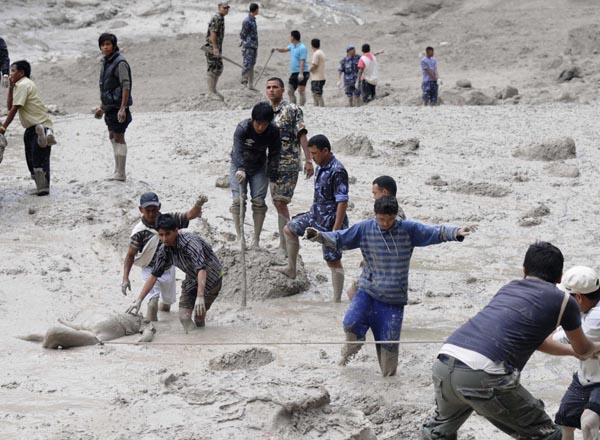
Kathmandu, May 6 : A glacial lake burst on Saturday in the high Himalayan region in northwestern Nepal sweeping away houses, farms, cattles near the tourist resort of Pokhara, killing at least 13 people and leaving 60 missing, including three foreign trekkers.
The lake waters flooded the Seti river in the remote Kaski district, 300-km away from capital Kathmandu, sweeping away parts of Sardikhola village located on the foothills of the famous Machapuchare peak.
The army and police officials said so far 13 bodies have been recovered from the banks of the swollen river. “The waters have risen so high that they are touching bridges,” they said.
Official said though the bodies were badly scarred and swollen, most of them appeared to be of local villages.
Army spokesman Ramindra Chhetri said army helicopters and rescue teams had been rushed to the spot and five people buried under deluge were rescued. He said the fury of the river waters had also swept away trucks and buses.
Fast-flowing floodwaters from the swollen Seti River smashed into two buildings and a number of shacks in Kharapani village, in the shadow of Mt Annapurna.
Though incidents of glacial Himalayan lake burst have been reported from parts of Tibet in China, this is the first such major tragedy in Nepal.
Nepalese experts have warned of such catastrophic happenings triggered by climatic change and melting glaciers.
Chhetri said sixty people were still missing, including three Russian tourists who were part of a trekking team. The names of the Russians were immediately known.
The flooded region is a major draw for foreign trekkers as the area has three more than 8,000 metre peaks, including Annapurna, Dhaulagiri and Nilgiri, but as the trekking season is yet pick up, the number of mountaineering teams is less in number.
Prime Minister Baburam Bhattarai has ordered the authorities to conduct the rescue operation without any delay.
He is monitoring the incident and is in touch with the authorities in Pokhara.





Comments
Add new comment